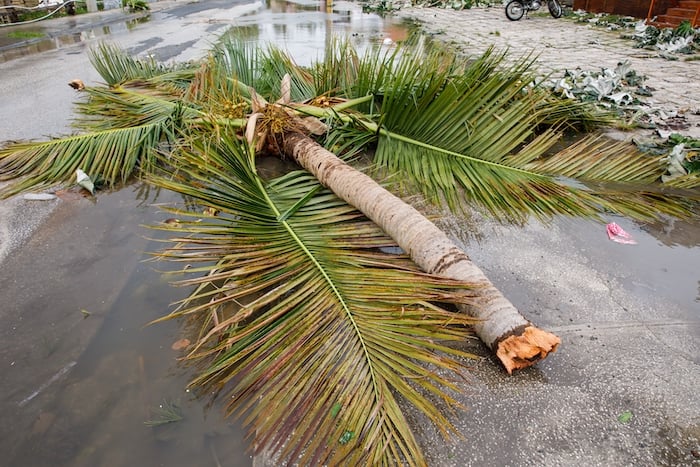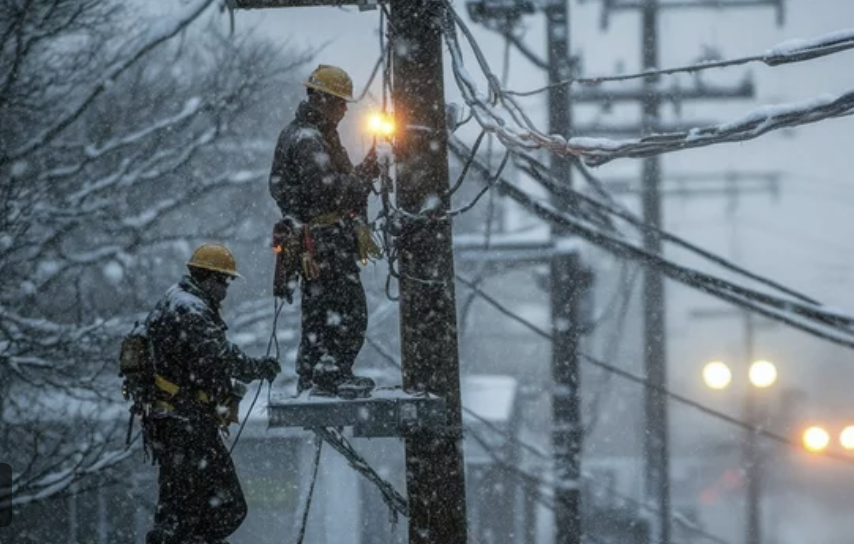This year’s storm season has only just begun in North America and the U.S. has already seen several emergencies that demanded urgent response from utility workers. In one week last month, Duke Energy sent 6,000 workers and contractors into the field to restore power across over 2,000 outage locations.
The National Oceanic and Atmospheric Administration is predicting a similar storm season to last year, when 20 weather and climate disasters caused over $1 billion in damages apiece. That means utilities around the country can anticipate more damage to their infrastructure — and workers can expect to encounter risks they rarely face during their normal workdays.
Tornados and hurricanes present obvious safety hazards for utility workers, but storm recovery boasts its own set of risks. With the first tropical cyclones already arriving in the North Atlantic, here are 4 principles to keep in mind as utilities strive to keep workers safe this storm season.
Top 4 Principles of Safer Storm Recovery
1. Organize first.
Strong leadership always makes a difference to workers, but it’s essential for storm recovery. Crisis response requires major coordination to dispatch crews in a safe and useful manner. With mutual assistance agreements in place that commit utilities to support one another in emergencies, recovery efforts can be a logistical minefield for preparing, equipping, and assigning workers safely.
Often in emergencies, recovery workers want to jump in and help as quickly as possible.
“That can manifest in making poor decisions if you’re rushing, if you’re ignoring policies, procedures and safeguards,” Ian Madison, senior manager of safety for Entergy told Safety and Health Magazine earlier this year.
Without clear direction and oversight, recovery workers may waste time duplicating others’ tasks or take initiative that puts them at risk, such as starting an excavation near an unmarked gas line. Recovery coordinators need to keep work and safety briefings a priority, even when short on time.
2. Communicate constantly.
Recovery requires top-down leadership, but it also needs information flowing back from those on the frontline. Storms and their response needs can change rapidly, which demands open, two-way communication to keep everybody safe.
“Without effective communication, we expose ourselves and others to unnecessary hazards that can almost always be identified and mitigated,” wrote Seth T. Werling, regional safety manager for the electric power division of Hooper Corp., for Incident Prevention.
While rushing to restore service, workers may spot a hazard that’s crucial to the safety of others — a gas leak, a downed power line, or busy colleagues ignoring safety best practices. Supervisors and coordinators need this information to ensure it’s passed along to keep everyone safe. Open communication is always important, but the need is heightened during storm recovery, when workers are encountering unusual hazards in new environments under pressure to work quickly.
Coordinators would do well to foster an environment of open communication, even in a frantic scenario.
“Safety and efficiency are synonymous,” says Nick Stavropoulos, utility worker safety expert and former President and COO of PG&E. “If you invest the time, effort, and energy to make sure the work is done as safe as possible, the work will also be as efficient as possible.”
3. Let local knowledge take the lead.
With mutual assistance agreements, storm recovery can see utility workers traveling to new regions of the country to support their colleagues. Extra hands are invaluable during a crisis, but they can also introduce new hazards that need to remain front of mind.
Severe storms often land in areas of the U.S. with wildlife that can pose real risks to people unequipped to handle them. Utility workers in Louisiana and Florida may know to watch out for alligators and snakes during storm recovery, but a crew on loan from Illinois may not have proper awareness or PPE to deal with them.
Disease also presents a heightened hazard after a severe storm. Poor ventilation and wastewater leaks can transmit bacteria, viruses, and molds that workers rarely encounter during normal workdays. Heat illness is another elevated risk, when hot and humid weather can affect workers who haven’t acclimated to it.
Keeping local knowledge at the forefront can help produce better safety outcomes. Consider information locals may take for granted that needs to be clarified during safety briefings. (It also never hurts to remind people about hand hygiene and disinfection needs, which are easy to forget in a crisis.)
4. Stay vigilant about best practices.
During emergency response, workers feel extra pressure to move quickly, which can lead them to ignore basic safety protocols and training. Slips, trips, and falls are a common hazard in utility work, but they’re an even bigger risk after a storm, when the ground is wet, soft, and uneven.
When racing to get utilities back up and running — or even just secured — it’s easy to ignore proper caution and safety best practices. But, it’s imperative to stay vigilant with known procedures to avoid adding workplace injuries to an already tough situation.
Of course, technologies can help forecast the risks posed during recovery tasks. By staying aware of elevated hazards after a storm, utility workers can exercise heightened caution when performing work they consider routine, helping stay safe despite the higher risk.
***
Storms are inevitable, and as the climate changes they are projected to increase in severity. At the same time, there’s greater need for power and telecommunications infrastructure to deliver service. That means workers will continue to encounter more and more safety hazards through the storm recovery process. But, with the right priorities, knowledge, and tools, the utilities can continually move toward a world with zero safety incidents — even in emergencies.

